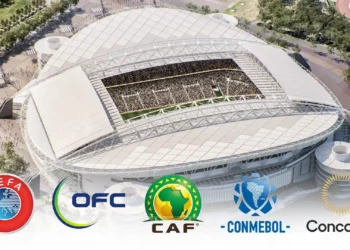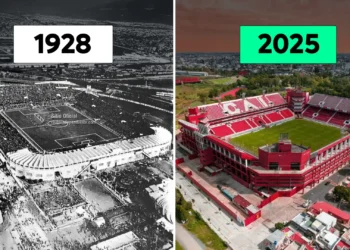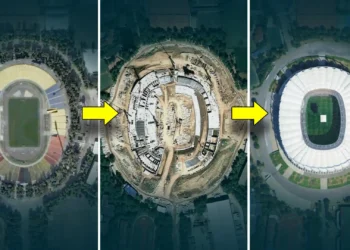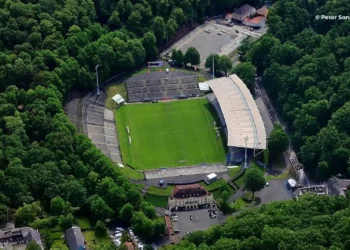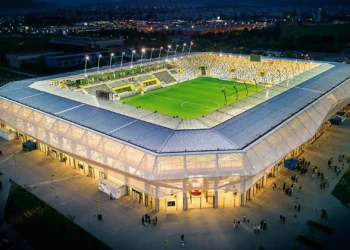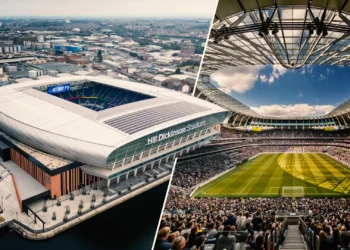Today, we’ll explore 10 incredible Latin American stadiums that may not have the fame of La Bombonera or Maracanã but are hidden gems in their own right. Each of these venues offers unique structural designs and vibrant atmospheres, making them true treasures for both clubs and their fans. Sit back and enjoy discovering these remarkable stadiums!
10. Estadio Hernán Ramírez Villegas
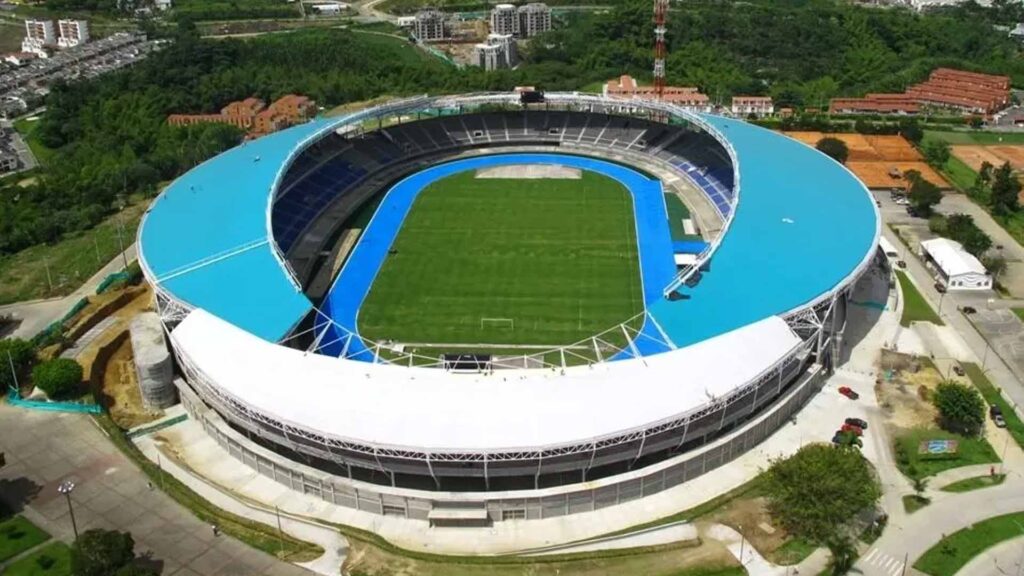
Capacity: 30,000 Club: Deportivo Pereira Location: Pereira, Colombia
Estadio Hernán Ramírez Villegas is a multi-purpose stadium located in Pereira, Colombia. Opened in 1971, it primarily hosts football matches and serves as the home ground for Deportivo Pereira. The stadium underwent renovations in 2011, expanding its capacity to 30,000 seats. Known for hosting national and international events, it is named in honor of Hernán Ramírez Villegas, a prominent local sports figure.
09. Estadio Único Madre de Ciudades
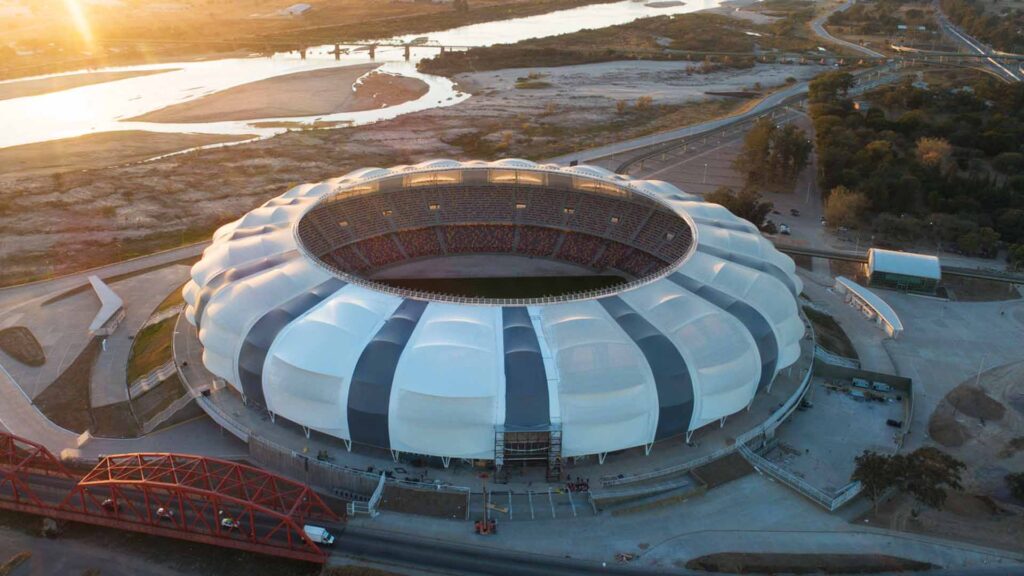
Capacity: 30,000 Location: Santiago del Estero, Argentina
Estadio Único Madre de Ciudades is a modern stadium located in Santiago del Estero, Argentina. Inaugurated in 2020, it has a seating capacity of 30,000 and is used primarily for football matches. The stadium serves as a key venue for major domestic and international sporting events, including Argentina’s national team games. Known for its cutting-edge design, it is a symbol of the region’s development and commitment to sports infrastructure.
08. Arena das Dunas
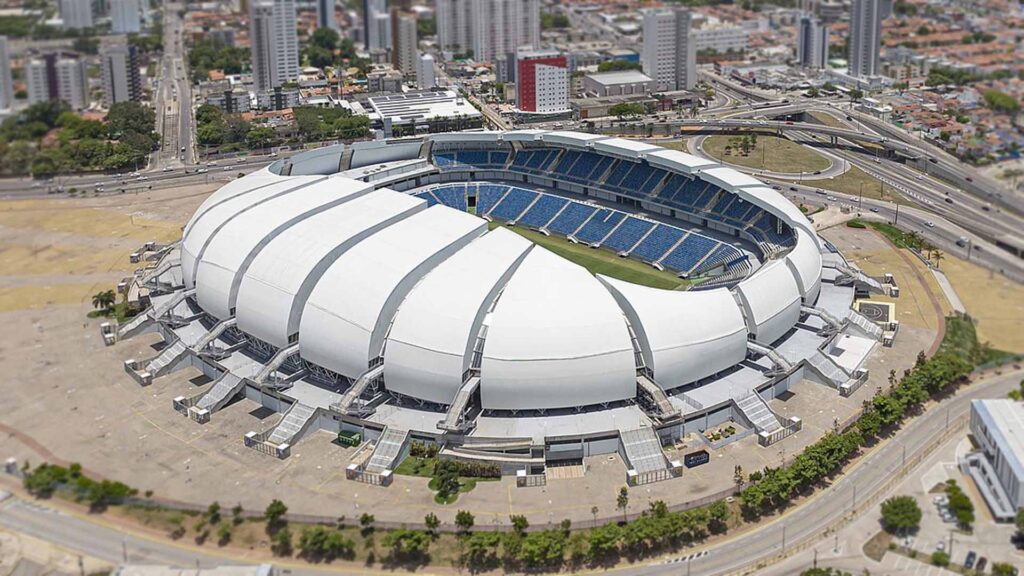
Capacity: 31,000 Club: América-RN Location: Lagoa Nova, Natal, Brazil
Arena das Dunas is a multi-purpose stadium located in Natal, Brazil. Opened in 2014, it was built for the FIFA World Cup and hosted several matches during the tournament. The stadium has a seating capacity of 31,000 and features a striking design inspired by the region’s sand dunes. Primarily used for football, it serves as the home ground for local clubs like América de Natal and ABC FC. Arena das Dunas is renowned for its modern facilities and architectural beauty.
07. Estadio Olimpico Pascual Guerrero
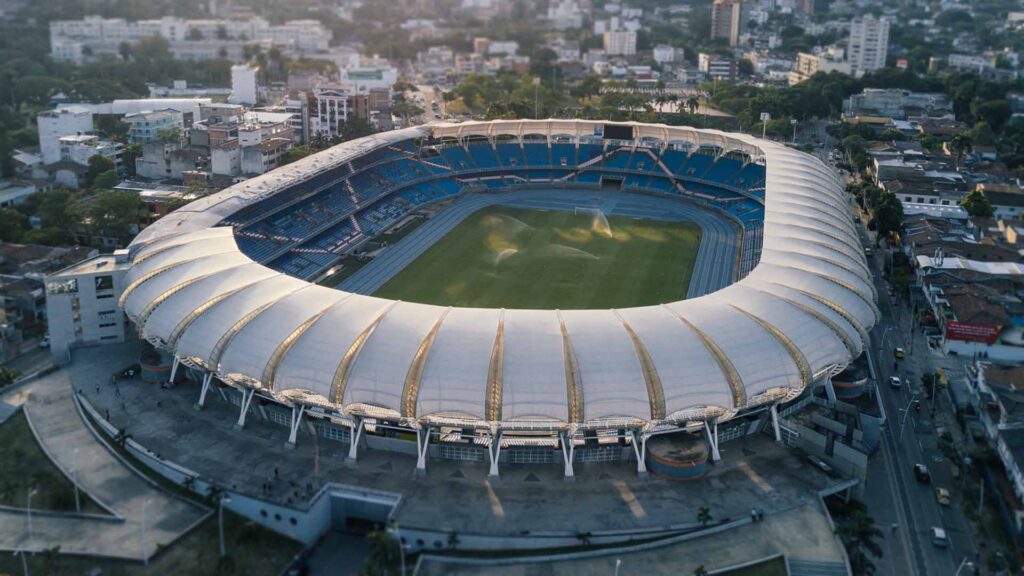
Capacity: 37,000 Club: América de Cali, Atlético F.C., Boca Juniors de Cali Location: Cali, Colombia
Estadio Olímpico Pascual Guerrero is a multi-purpose stadium located in Cali, Colombia. Opened in 1937, it is primarily used for football and athletics, serving as the home ground for local clubs América de Cali and Atlético FC. The stadium has a seating capacity of around 37,000 and has undergone multiple renovations to host major events, including the Pan American Games and the Copa América. Named after Colombian poet Pascual Guerrero, it is one of the most iconic sporting venues in the country.
06. Estadio Banco del Pacífico Capwell
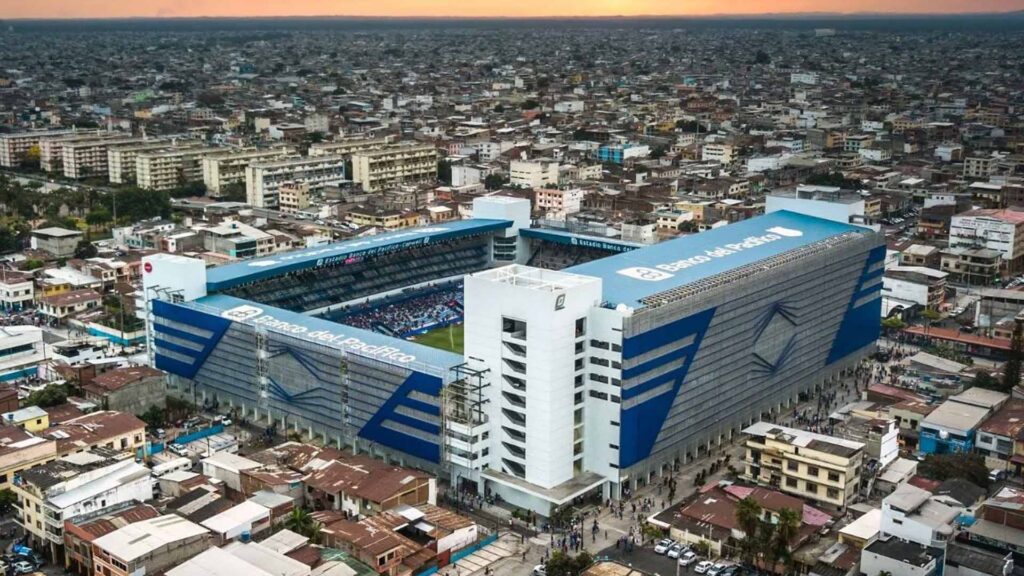
Capacity: 40,000 Club: Club Sport Emelec Location: Guayaquil, Ecuador
Estadio Banco del Pacífico Capwell is a football stadium located in Guayaquil, Ecuador. Opened in 1945, it is the home ground of Club Sport Emelec, one of Ecuador’s top football teams. The stadium has a seating capacity of around 40,000 after several renovations, the most recent completed in 2017. Known for its passionate atmosphere, it is a key venue for domestic and international football matches. The stadium is named after its sponsor, Banco del Pacífico, and the club’s founder, George Capwell.
05. Estadio Rodrigo Paz Delgado
Capacity: 41,000 Club: LDU Quito Location: Quito, Ecuador
Estadio Rodrigo Paz Delgado, commonly known as Estadio de Liga, is a football stadium located in Quito, Ecuador. Opened in 1997, it serves as the home ground for LDU Quito, one of the country’s most successful football clubs. The stadium has a seating capacity of around 41,000 and is situated at a high altitude, making it a challenging venue for visiting teams. Named after the club’s former president Rodrigo Paz Delgado, the stadium has hosted numerous domestic and international matches, including Copa Libertadores finals.
04. Estadio Cachamay
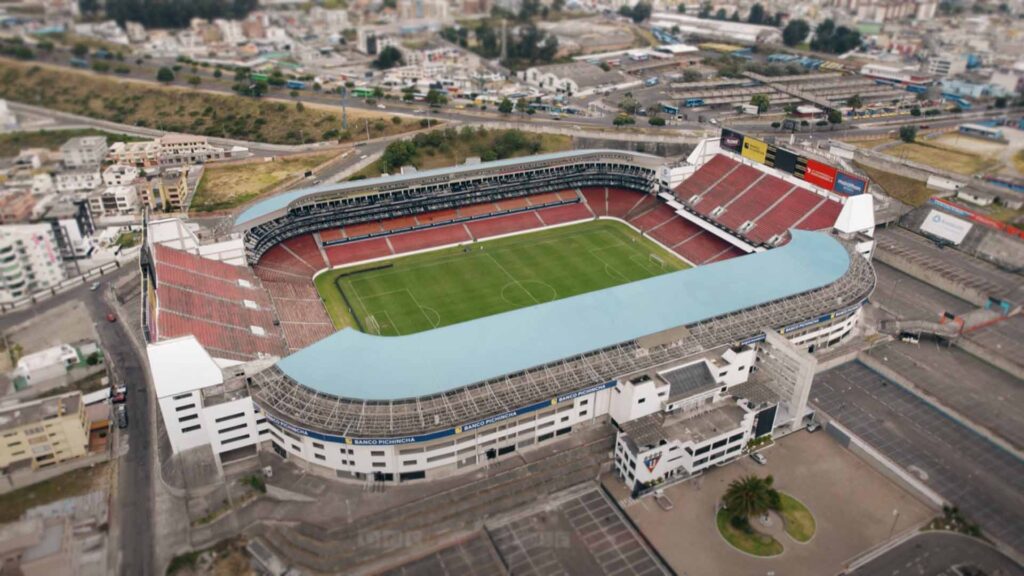
Capacity: 41,000 Club: Mineros de Guayana, Minervén de Bolívar Location: Ciudad Guayana, Venezuela
Estadio Cachamay is a multi-purpose stadium located in Ciudad Guayana, Venezuela. Opened in 1990, it is primarily used for football and serves as the home ground for Mineros de Guayana. The stadium has a seating capacity of approximately 41,000, and it underwent significant renovations for the 2007 Copa América. Nestled near the Caroní River, the stadium is known for its scenic surroundings and vibrant atmosphere during matches. It is a key venue for both domestic competitions and international events.
03. Estadio Olimpico Metropolitano de Mérida
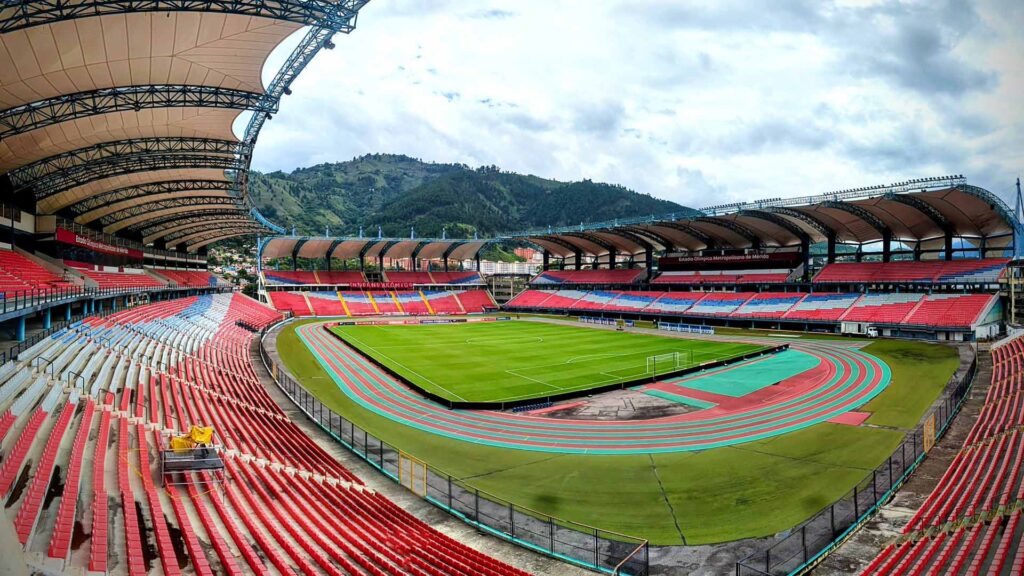
Capacity: 42,000 Club: Estudiantes de Mérida FC Location: Mérida, Venezuela
Estadio Olímpico Metropolitano de Mérida is a multi-purpose stadium located in Mérida, Venezuela. Opened in 2005, it primarily hosts football matches and serves as the home ground for Estudiantes de Mérida. The stadium has a seating capacity of around 42,000 and was a venue for the 2007 Copa América. Known for its picturesque location in the Andes Mountains, it is one of the country’s most modern sporting facilities, hosting both domestic and international events.
02. Estadio Metropolitano de Cabudare
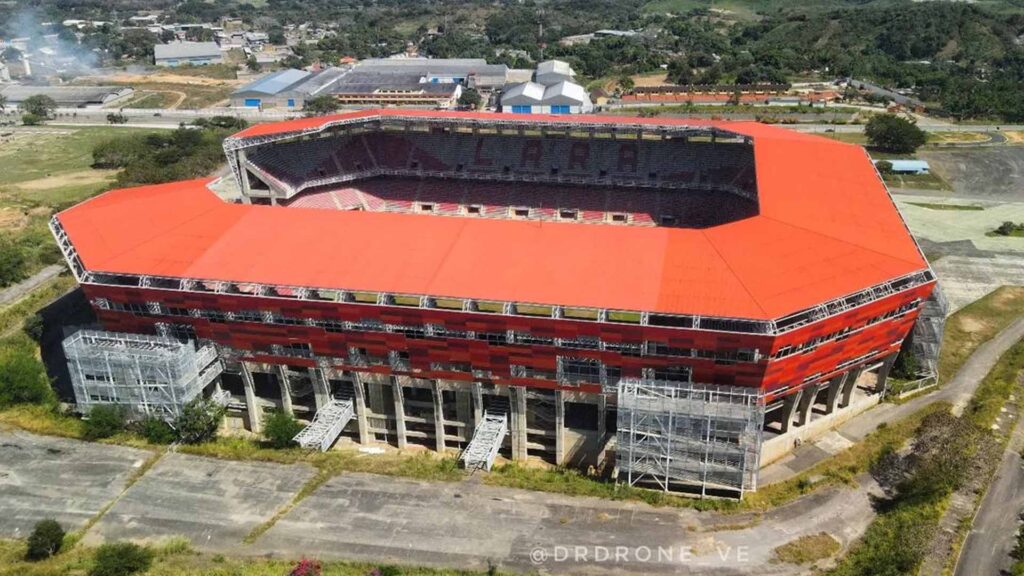
Capacity: 47,000 Club: ACD Lara Location: Cabudare, Venezuela
Estadio Metropolitano de Cabudare is a football stadium located in Cabudare, Venezuela. Opened in 2009, it has a seating capacity of around 47,000 and serves as the home ground for Lara FC and Deportivo Lara. The stadium was built for the 2007 Copa América, though it was completed after the tournament. Known for its modern design and facilities, it is one of the largest stadiums in Venezuela, regularly hosting domestic matches and occasional international events.
01. Estadio Monumental Banco Pichincha
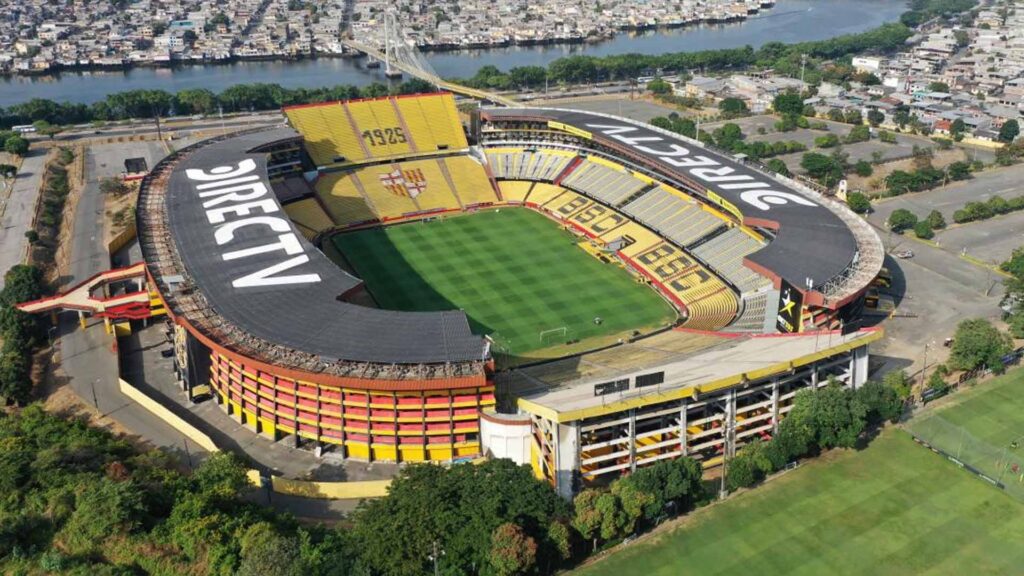
Capacity: 59,000 Club: Barcelona S.C. Location: Guayaquil, Ecuador
Estadio Monumental Banco Pichincha is a prominent football stadium located in Quito, Ecuador. Opened in 1988, it is the home ground of Barcelona SC, one of the top football clubs in Ecuador. With a seating capacity of approximately 59,000, it is the largest stadium in the country. The stadium has hosted numerous domestic and international matches, including Copa Libertadores fixtures. Known for its vibrant atmosphere and passionate fan base, it is a central hub for Ecuadorian football.


